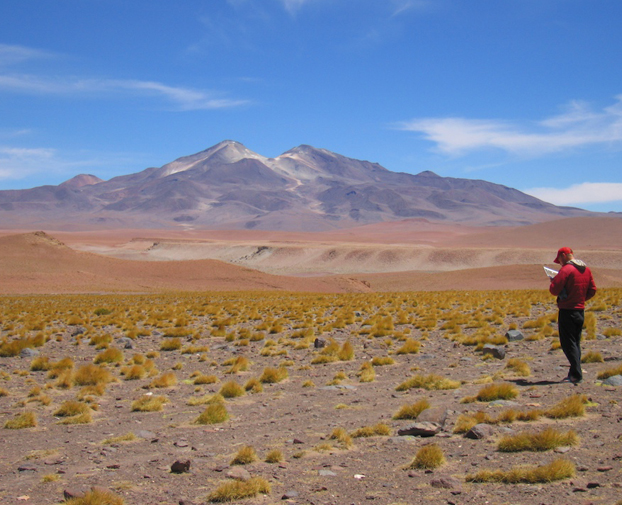
© Noah FinneganUturunca volcano in southwestern Bolivia.
A broad swath of the Altiplano plateau in southwest Bolivia is inflating like a giant balloon, presumably as magma builds up deep underground. This aggressive rise hints that a new supervolcano could be awakening in South America, geologists say, and so they are keen to learn more about the underlying cause.
So far, they know the inflation is surprisingly fast: the center of the patch has risen 7.9 inches (20 centimeters) in the past 20 years. What is more, the uplift extends about 43 miles (70 kilometers) across -- similar in size to the caldera that formed in the wake of the latest eruption of the Yellowstone supervolcano, which blanketed half of the U.S. in ash 640,000 years ago.
At the center of all recent intrigue is Uturuncu, a nearly 20,000-foot (6,000 meter) ancient volcano long given up for dead. Based on the spewage from its last eruption, 300,000 years ago, it would not qualify as a supervolcano on its own. (Its peers are far tamer, including Mount St. Helens in Washington state). But Uturunca could be drawing magma from a dense swarm of nearby volcanoes, many of which are currently active.
The big question is how much magma has accumulated so far. Based on Uturunca's rate of inflation, scientists calculated the magma chamber has been growing by about 27 cubic feet (1 cubic meter) per second. But for how long? Amassing magma at that rapid clip for thousands of years would make for a serious amount of fuel for an eruption. Or maybe its only just begun gathering steam. The rate measurements are based on satellite data the go back only 20 years.


Comment: If scientists were able to just look at the facts and accept them as they are, without allowing their - or somebody else's - biases and agendas to get in their way, there would not be any debates on whether a global warming is happening on the planet or not. The evidence speak for themselves, as we learn here at SOTT.net by observing and documenting what is actually happening on a daily basis.
For a clear picture of what is happening weather-wise, read also: Connecting the Dots: Cosmic Changes, Planetary Instability and Extreme Weather